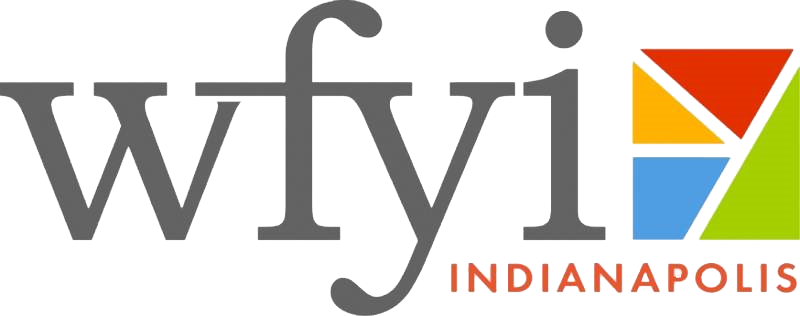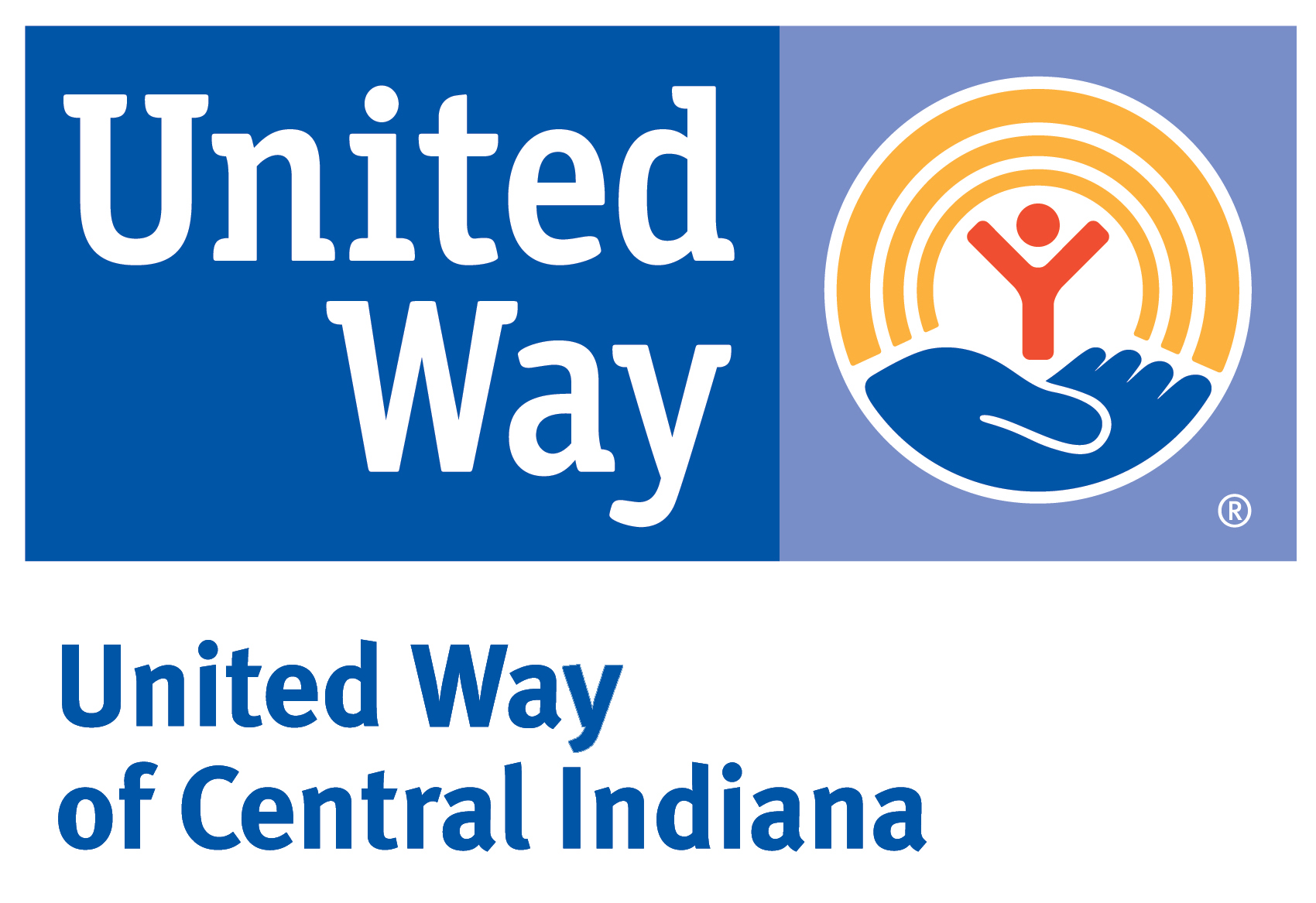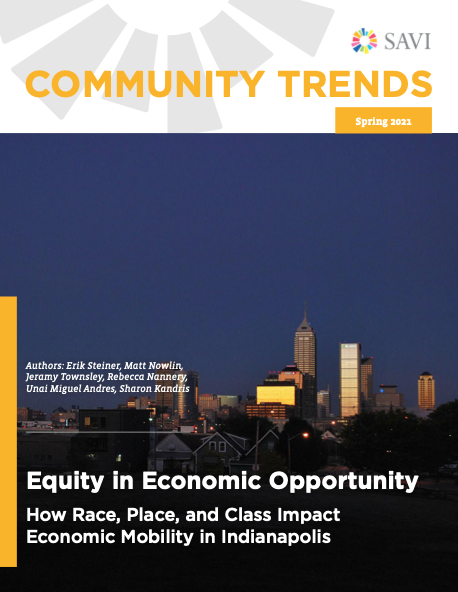Equity in Economic Opportunity
SAVI Talks - March 25, 2021Building on research by Harvard’s Raj Chetty and his team, we are developing new insights and highlighting findings about opportunity in Indianapolis neighborhoods. The average child born into a high-income family in Indianapolis earned $50,000 in household income when they were about 35. Children born to low-income families grew up to earn $27,000.
- Indianapolis’ level of opportunity for low-income children is lower than all but two of the largest U.S. cities. Only Atlanta and Charlotte have worse outcomes than Indianapolis.
- The average Black child born in Indianapolis earns $9,000 less than the average White child. There is a spatial disparity too: In many neighborhoods, children who grew up there earn less than $20,000 per year. In other neighborhoods, children born at the same income level grow up to earn $35,000 or more.
- Neighborhoods that are segregated clearly have lower opportunity outcomes for children. People born into Redlined neighborhoods have less economic opportunity, even when controlling for their parents’ income.
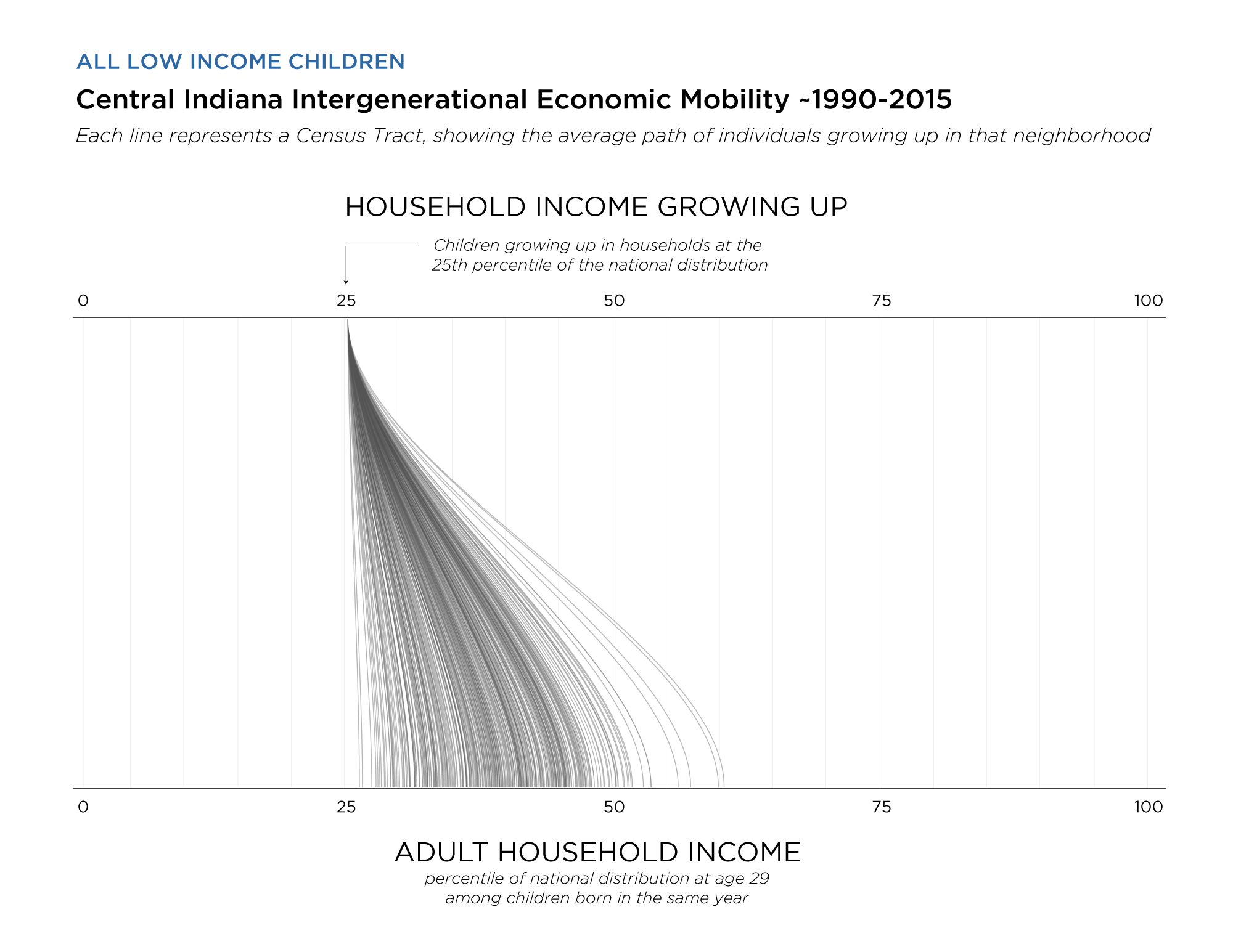
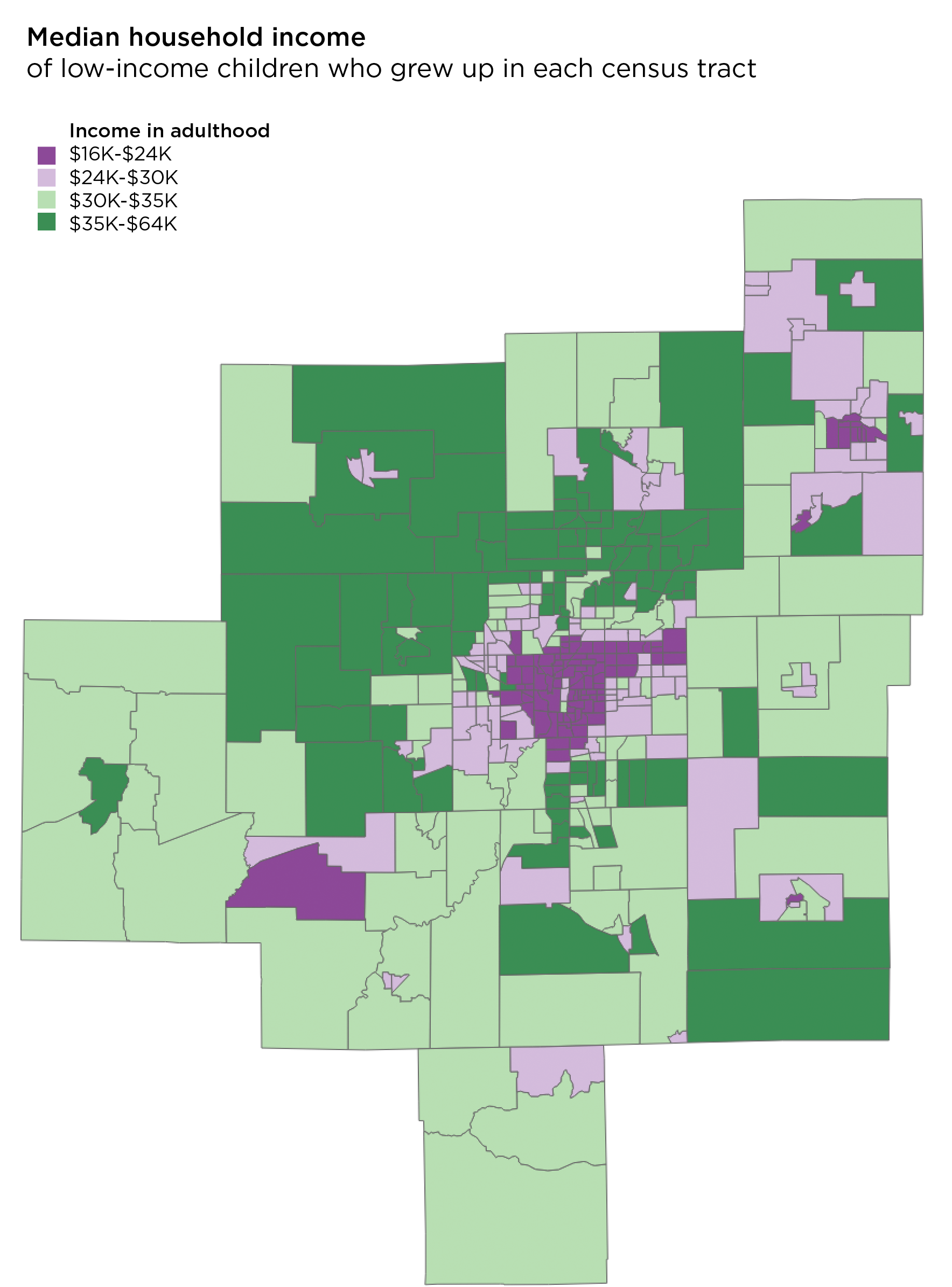
Articles and Story Maps
Explore other research and interactive content we have developed around equity.
What We’re Reading: February 21, 2018
This week, Health Affairs reports on high child mortality in the US, NPR dives into the contract workforce, and NASA offers a very cool population estimator.
City Funds Flanner House Micro-Grocery in Food Desert
WFYI reports that the City of Indianapolis announced the first recipient of its Healthy Food Access grant on Thursday. Flanner House will receive $400,000 to develop Cleo's Bodega, a micro-grocery that will sell discounted food through a relationship with Under the...
What We’re Reading: January 14, 2018
This week, Chicago Policy Review looks at a paper that finds Atlanta’s low-income households moved to where transit is available, NPR highlights the work of an Indianapolis CDC, and Brookings provides an economic development dashboard.
Incomes Rising by Sector, but Real Income Flat Since 2007
In the Indy Metro between 2007 and 2016, goods producing jobs fell by 12,000 while service jobs increased by 126,000. Average income per employee remained almost flat during this period.
Mortgage Activity Growing Fastest Among Middle- and Upper-Income Borrowers
There were 50 percent more Central Indiana home purchase loans in 2016 compared to 2012. Among upper-income borrowers, the number of new loans went up 80 percent.
Indy Rezone Defines New Context Areas: Compact and Metro
Indianapolis adopted a new zoning ordinance called Indy Rezone, effective May 2016. A zoning ordinance generally consists of list of regulations defining what property owners are permitted to build in each zone, accompanied of a map defining where particular zones are...
On Average, Online Charter Schools Have Lower Graduation Rates
Last week, WFYI reported that Hoosier Academies Virtual Charter School is slated to close in June, due to consistently poor performance. For example, its 2016 graduation rate was 23 percent. Hoosier Academy is not the only online charter school to struggle with low...
As Gentrification Bill Considered, Values Increasing Quickly in These Neighborhoods
A proposal in the state legislature would offer long-time homeowners in designated areas relief from rising property taxes. Indiana House Bill 1056, which was debated in a study committee last week, would cap assessed value increases at three percent for eligible...
Who Rides the Bus: Examining Transit Ridership in Marion County
This research combines information from the recent IndyGo survey with a variety of neighborhood socio-economic factors from the SAVI community information system to better understand how and why certain groups of riders used the service. The report provides general...
The Big-Picture Transformation of Health Care
There is one clue that speaks volumes about your health prospects but has nothing to do with your medical records.
Authors
Sharon Kandris
Associate Director,
The Polis Center
Jay Colbert,
Data Manager,
The Polis Center
Jeramy Townsley,
Visiting Research Analyst,
The Polis Center
Matt Nowlin,
Research Analyst,
The Polis Center
SAVI Talks Panelists
Patrice Duckett
Exec. Director
Fay Biccard Glick Crooked Creek Neighborhood Center
Amy Nelson
Exec. Director
Fair Housing Center of Central Indiana
Pamela Ross
VP of Opportunity, Equity & Inclusion
Central Indiana Community Foundation
SAVI Talks Moderator
Jill Sheridan
Health & Science Reporter
Indiana Public Broadcasting, WFYI
Event Partners
